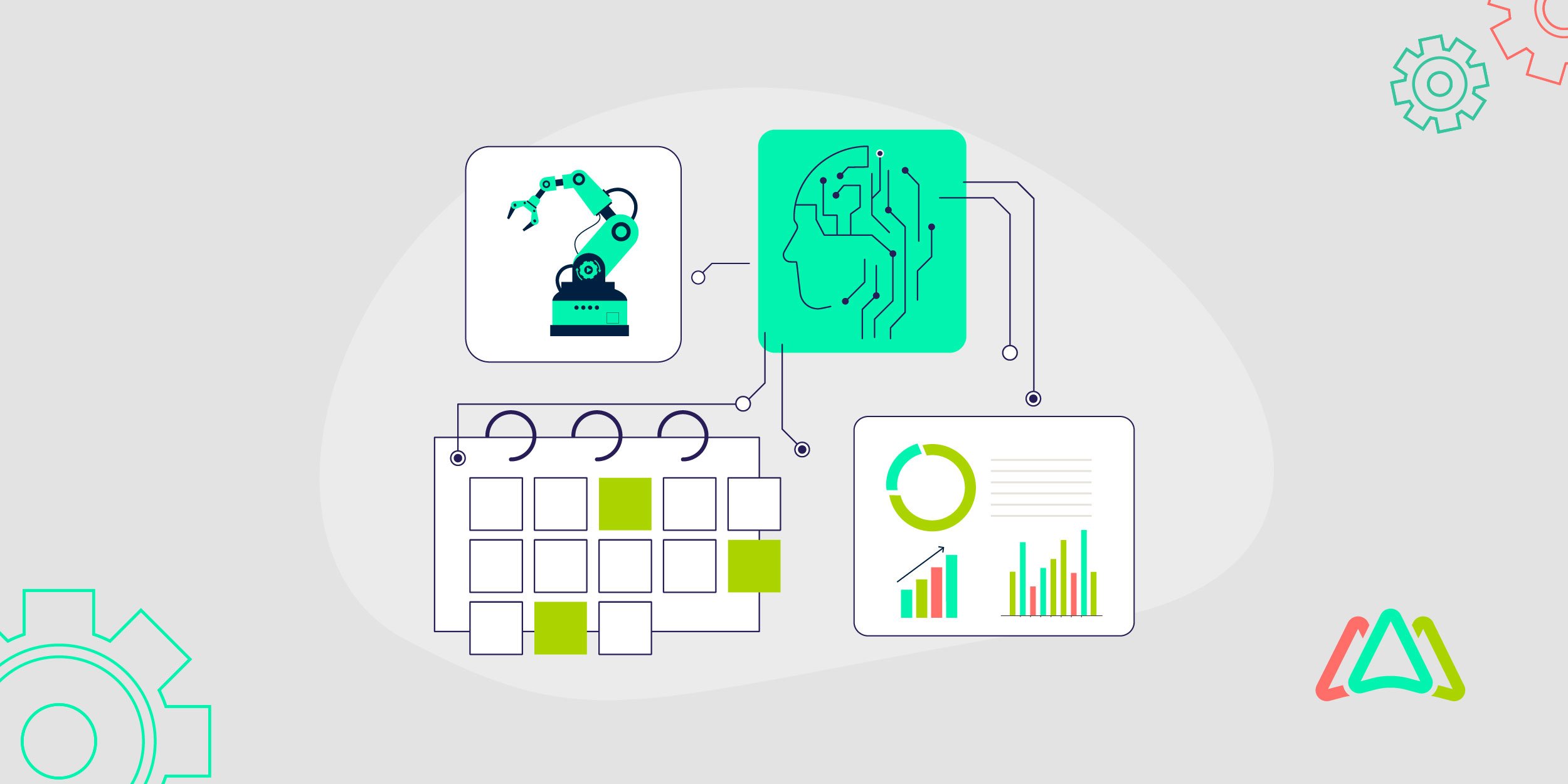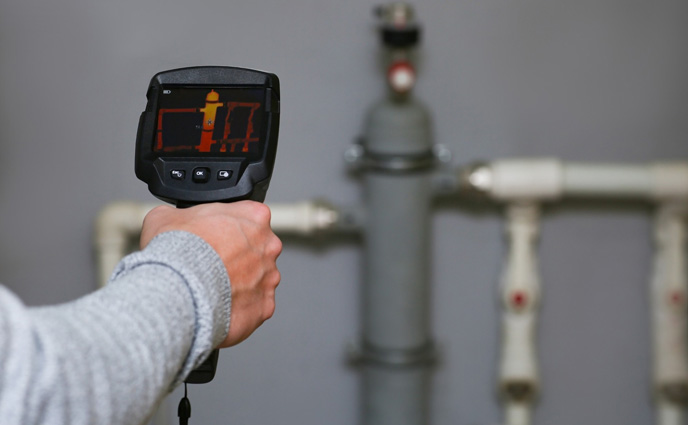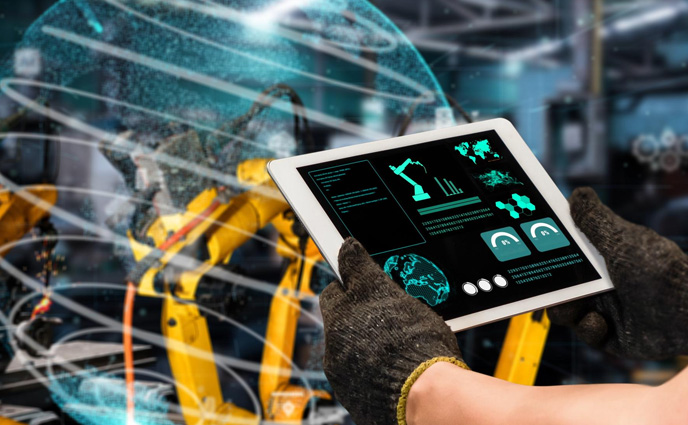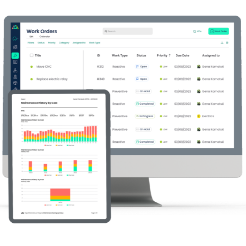
Preventive Maintenance with Human-Machine Collaboration
In the early days, preventive maintenance could be done effectively with a trained eye and a good ear. If a machine hummed differently, something was wrong. Fast-forward to the present, and things have changed significantly. AI-powered analytics can now identify patterns and prevent failures before they occur. Maintenance teams are no longer dependent on routine checkups; data is available based on their decisions.
However, here’s the catch – simply integrating technology isn’t a solution. AI and automation make maintenance smarter, but they don’t replace human expertise. Machines can highlight anomalies, but people interpret the data, make informed judgments, and take action based on the insights. That’s where the true value is: combining human intuition and machine intelligence.
This article examines how human-machine collaboration is transforming preventive maintenance and how businesses can leverage this integration to enhance their reliability and efficiency.
The Shift from Traditional Maintenance to Human-Machine Collaboration
In the early period of industrial maintenance, preventive approaches focused on routine planning and scheduling. Service technicians maintained machines at regular intervals, regardless of their condition; however, that method had its shortcomings. Some machines received maintenance too early, wasting time and resources, while others broke down unexpectedly between inspections.
However, since technicians could only rely on what they could see, hear, or feel, this often led to missed warning signs.
I saw this firsthand while working at an international fast-food chain. Our cold room, where we stored perishable ingredients, ran 24/7, even when the store was closed. If the cooling system failed overnight, we wouldn’t know until morning, when it would be too late. A single unnoticed issue could result in losing a substantial stock of fresh ingredients, disrupting operations, and increasing costs. That’s the major issue with traditional maintenance: gaps in monitoring can result in costly failures.
Technology is changing that. Smart sensors are now monitoring machines in real-time, picking up temperature changes, pressure fluctuations, and unusual vibrations. With modern predictive maintenance systems, maintenance teams receive alerts days or weeks ahead of when a part is likely to fail.
But here’s the thing: full automation isn’t the answer. No matter how advanced AI gets, it still lacks human intuition. It can flag problems but doesn’t fully grasp a machine’s history, unique working conditions, or a company’s shifting priorities. That’s why the human touch is crucial. Instead of replacing workers, AI and automation provide them with better tools to make more informed decisions.
Core Technologies Enabling Human-Machine Preventive Maintenance
Once you combine the elements of real-time monitoring, AI-driven insights, and human expertise, industries can mitigate expensive breakdowns and keep machines working at optimal efficiency. The following are some of the important technologies that help.
IoT Sensors

IoT sensors monitor vital metrics, such as temperature, vibration, and pressure, relaying real-time information to maintenance teams. Consider food storage facilities, for instance. When I worked in a fast food chain’s cold room, I realized that even a minor temperature fluctuation could derail all perishable ingredients. With IoT sensors in place, even minor changes prompt alerts that enable staff to intervene before spoilage occurs or equipment fails. This level of constant monitoring is exactly what teams need to stay ahead of problems instead of fighting to correct them after the fact.
AI and Machine Learning
IoT sensors collect data, but it is analyzed and understood through AI and machine learning. These technologies discern trends in how equipment performs, allowing them to detect failures before they occur. AI-led systems identify these subtle problems that may not appear to be an issue when they occur, but can indicate larger problems later. Rather than reactively waiting for failure, maintenance teams can intervene at the optimal time to avoid costly repairs and minimize downtime.
Augmented Reality (AR) for Technicians
It is changing the technician's work by increasing efficiencies, rather than overlaying digital information on equipment. Using AR glasses or mobile devices, they can view real-time data, step-by-step repair guides, and even receive live assistance from remote experts, all while working on a machine. For example, imagine a new technician trying to troubleshoot a complex industrial pump. Rather than leafing through a hefty manual, they can use AR to see precisely where to look and what to adjust. This not only accelerates repairs but also minimizes mistakes and makes training infinitely more efficient.
Digital Twins
A digital twin is a virtual representation of a physical machine, updated in real-time by IoT sensors. This technology enables maintenance teams to run multiple simulations of scenarios and error-preventive methods before deploying them in the field.
Collaborative Robots (Cobots)
Whether inspecting high-voltage electrical panels or handling heavy machinery, maintenance work is often hazardous. Collaborative robots, or cobots, are designed to work alongside people, performing tasks that are either dangerous or tedious. In an oil refinery, for example, a cobot equipped with a high-resolution camera can enter a high-risk zone to inspect pipelines. At the same time, human operators analyze the footage from a safe distance.
Combining these technologies leads to smarter, safer, and more efficient preventive maintenance systems in the industry. The goal is not to supplant but to augment human expertise.
The Power of Synergy: How Humans and Machines Work Together in Preventive Maintenance
Machines are more intelligent nowadays, yet they still require people to fine-tune their work. These systems don’t necessarily grasp the bigger picture. A machine might notice that something is vibrating incorrectly and deduce that a breakdown is imminent. In contrast, a human technician might recognize that it’s only a temporary problem resulting from an increase in the machine's workload.
Machines excel in repetitive tasks, such as monitoring temperatures and performing self-checks. However, if something goes awry, such as an unusual sound or a scent that indicates incineration, humans are the ones who investigate.
From my experience, AI isn’t perfect; it makes mistakes and can be biased based on the data it was trained on. Human oversight is key in preventing unnecessary shutdowns, misdiagnosed issues, and overlooked risks. The best preventive maintenance strategies leverage AI’s speed and accuracy, combined with human expertise, to create an efficient and reliable system.
Real-World Applications of Human-Machine Preventive Maintenance
The realm of preventive maintenance is evolving across sectors with the integration of human expertise and advanced technology. This collaboration streamlines processes in many sectors. Here’s how human-machine synergy is industrializing maintenance across various industries.
Manufacturing Plants

Manufacturers are using AI-based predictive maintenance to prevent expensive equipment failures. For example, General Electric (GE) leverages its AI-powered Predix platform to monitor industrial machinery in real-time.
The system predicts potential breakdowns by analyzing temperature, pressure, and vibration data, giving maintenance teams time to respond. It is a continuous mechanism that lowers maintenance costs by an incredible 30%, thereby enhancing Overall Equipment Efficiency (OEE).
Aircraft Maintenance
Predictive maintenance in aviation is crucial for maintaining aircraft reliability and optimizing passenger safety. Delta and GE Aviation issue monitoring systems, similar to those used for calculating flight status in jet engines, which utilize artificial intelligence. These systems identify early signs of wear and tear, reducing unscheduled engine removals by 25 percent. However, human validation is crucial; maintenance teams verify AI-generated alerts before proceeding with repairs to ensure accuracy and safety.
Oil & Gas Industry
Predictive maintenance equips oil and gas companies with AI to reduce unplanned downtime and safeguard workers. Recently, an international oil company introduced AI monitoring on its offshore rigs, resulting in a 25% decrease in downtime and saving $10 million a year. IoT sensors constantly monitor critical machinery, enabling engineers to identify and fix problems before they become disastrous. This method is also safer, reducing the chances of dangerous accidents such as oil spills and equipment failures.
Advantages of Human-Machine Preventive Maintenance
Combining human knowledge with machine intelligence has transformed preventative maintenance, enabling industries to maintain smooth equipment operations. This collaboration reduces downtime, cuts costs, enhances safety, and improves decision-making. Here’s how:
Reduced Downtime
Machines do not suddenly fail without warning. Human’s along with technology help in identifying these early warning signs. Technicians are trained to monitor the systems and conduct maintenance before failure occurs. By taking preventive measures, the element of surprise is reduced, and operations can continue uninterrupted.
Lower Costs
You only repair it when needed, which translates to fewer unnecessary repairs and fewer nasty breakdowns. However, it’s not all left to the machines; it’s us humans who come in at the end up making the final call on what action to take, finding a smart balance between cost and reliability.
Improved Safety
Many maintenance tasks are hazardous and can involve high temperatures, chemicals, and heavy machinery. Automated systems and collaborative robots (cobots) can perform the most hazardous jobs, thereby eliminating the need to put technicians in harm's way. This reduces the risk of workplace injuries while allowing human workers to devote more resources to complex troubleshooting and system oversight.
Enhanced Decision-Making
Raw data alone isn’t enough. Skilled professionals interpret this information while considering external factors, such as operational adjustments or environmental conditions. By combining AI-based insights with human expertise, organizations can make more informed maintenance decisions that optimize both efficiency and reliability as a whole.
Combining machine efficiency with human reasoning leads to greater accuracy, cost savings, and enhanced safety in preventive maintenance. It ensures the industries work ahead of playing catch-up to equipment failures, while also optimizing resources and reducing risks.
Challenges of Human-Machine Preventive Maintenance
Human-machine collaboration in preventive maintenance has many advantages but also presents challenges.
Workforce Adaptation
As AI and automation take on more maintenance tasks, technicians must adapt to new technologies. Many companies are investing in training programs to upskill their workforce, ensuring they remain relevant in a tech-driven maintenance environment.
Integration Costs
The first and foremost question that every manufacturer wants to know before deploying AI-based maintenance solutions is the cost. These technologies need investment from companies. While this requires significant upfront investment, it yields an impressive ROI
AI Trust Issues
The trust is one of the most challenging aspects of AI-based maintenance. Although AI can be very effective at predicting failures, there is a downside to the use of an AI system, which includes an increasing number of false positives and unexpected errors. Furthermore, relying on AI decisions can be dangerous.
The Future
The future of preventive maintenance is poised to be much more sophisticated than ever before. In a world increasingly dominated by AI, leveraging technologies such as preventive maintenance will require industries to continually refine their processes for human-machine collaboration in order to overcome these challenges. The answer is integrating automation with human expertise for a more effective, dependable, and cost-efficient maintenance ecosystem.
If you think the future of maintenance is about AI and machines replacing humans, you’re wrong! The future of maintenance management involves both of them working together for smarter, safer, and more reliable operations. This balance shifts maintenance from a reactive to a proactive approach, reducing downtime and preventing costly failures.
The lesson here is to invest in AI-driven solutions while equipping workers with the skills to adapt. Now is the time for businesses to integrate AI-powered maintenance and empower technicians to build a more resilient future.
TABLE OF CONTENTS
Keep Reading
Spare parts management within maintenance can make the difference between a problem-free ...
16 Dec 2025
Every maintenance team eventually faces the same question: When should we repair, and when ...
12 Dec 2025
Enterprise Asset Management (EAM) software has become a cornerstone for organizations aiming ...
12 Dec 2025
Unexpected equipment breakdowns can disrupt operations, increase repair costs, and reduce ...
11 Dec 2025
Businesses are always looking for ways to improve efficiencies, reduce costs, and improve ...
9 Dec 2025
The longest U.S. federal government shutdown to date lasted 43 days, beginning on October 1, ...
5 Dec 2025
Every maintenance professional faces it sooner or later — that critical time when an aging ...
18 Nov 2025
The term 'best' is often used loosely, without a clear understanding of its context or ...
14 Nov 2025
In the not too distant past, maintenance strategies have been defined by reaction—fixing ...
13 Nov 2025
Tax season is the time of year that often sends a ripple of anxiety through many of us. The ...
11 Nov 2025
Selecting a Computerized Maintenance Management System (CMMS) can, at first glance, be an ...
4 Nov 2025
In healthcare facilities, equipment uptime involves more than achieving operational ...
31 Oct 2025
Companies are subject to economic ups and downs, also known as economic volatility. Today, ...
30 Oct 2025
Maintenance challenges are a constant struggle, with unplanned downtime costing manufacturers ...
27 Oct 2025
Last winter, a maintenance technician at a U.S. paper mill ignored a predictive alert that ...
10 Oct 2025
Many organizations proudly say they “have a CMMS,” but ownership alone doesn’t equal ...
9 Oct 2025
Every maintenance team is under pressure to do more with less. Unplanned downtime is often ...
7 Oct 2025
The implementation of simple, yet powerfully effective, checklists has repeatedly ...
3 Oct 2025
In manufacturing, every second counts. When production stops, whether due to scheduled ...
2 Oct 2025
The increasing cost of maintenance, lack of accountability, and siloed systems leave many ...
30 Sep 2025





